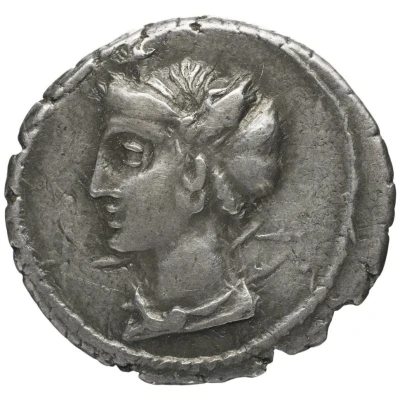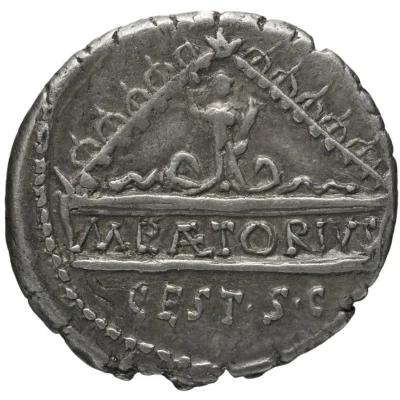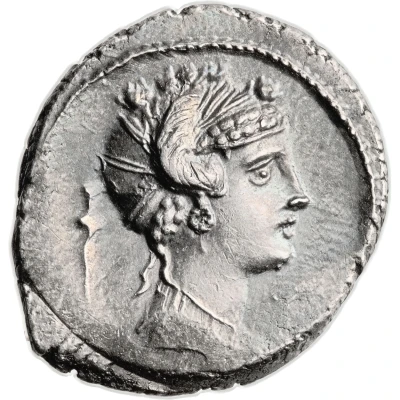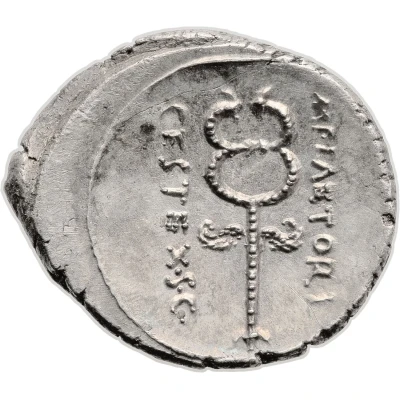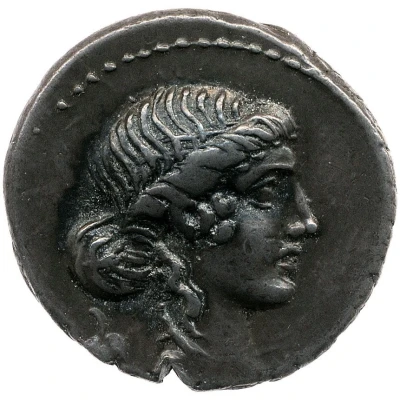
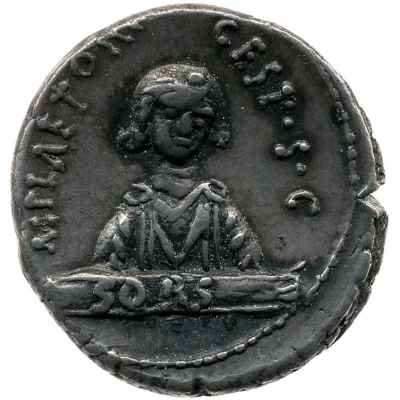

© British Museum
Denarius Plaetoria: Marcus Plaetorius Cestianus; M•PLAETORI•CEST•S•C 69 BC
69 BC year| Silver | 3.85 g | 19 mm |
| Issuer | Rome › Roman Republic (509 BC - 27 BC) |
|---|---|
| Period | Republic (509 BC - 27 BC) |
| Type | Standard circulation coin |
| Year | 69 BC |
| Value | Denarius (1) |
| Currency | Denarius of 16 Asses (141 – 27 BC) |
| Composition | Silver |
| Weight | 3.85 g |
| Diameter | 19 mm |
| Shape | Round (irregular) |
| Technique | Hammered |
| Orientation | Variable alignment ↺ |
| Demonetized | Yes |
| Updated | 2024-10-06 |
| Numista | N#390423 |
|---|---|
| Rarity index | 100% |
Reverse
Half-length figure of boy, facing, holding tablet inscribed SORS. Border of dots.
Script: Latin
Lettering: M•PLAETORI•CEST•S•C
Comment
The gens Plaetoria was a plebeian family, of Sabine origin.
Interesting fact
The Denarius coin was minted during the Roman Republic, a time when Rome was still a republic and not yet an empire. The coin features the image of Marcus Plaetorius Cestianus, who was a moneyer, or a person responsible for minting coins, in 69 BC. The coin's design includes the letters "M•PLAETORI•CEST•S•C," which stand for Marcus Plaetorius Cestianus, S(enatus) C(onsulto), or "by the authority of the Senate." This coin is made of silver and weighs 3.85 grams. It's interesting to note that the Denarius was the main currency of ancient Rome and was used for everyday transactions, and it's fascinating to think about the many hands that might have touched this coin throughout history.
